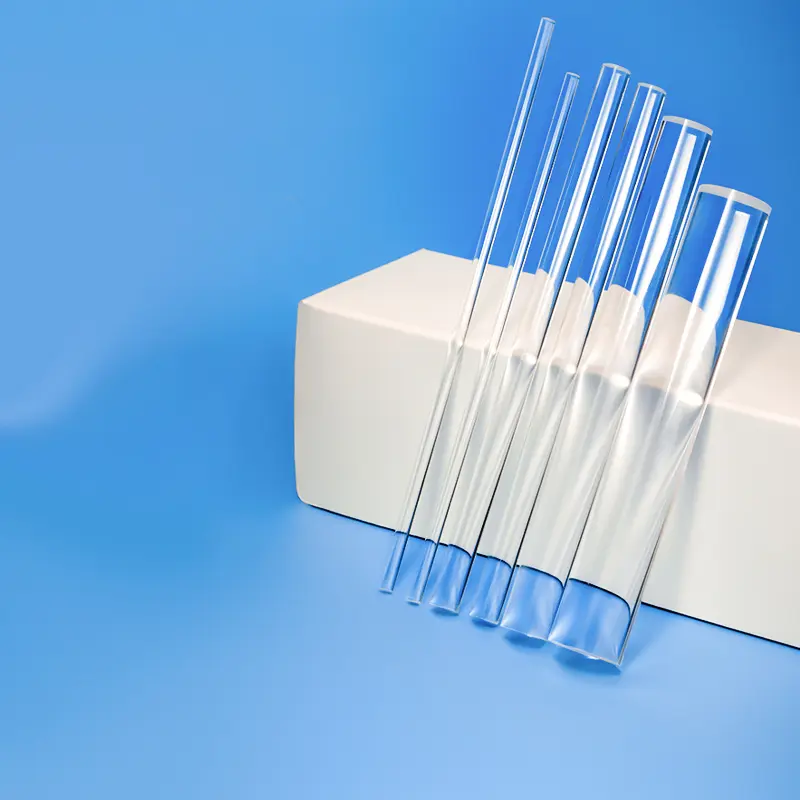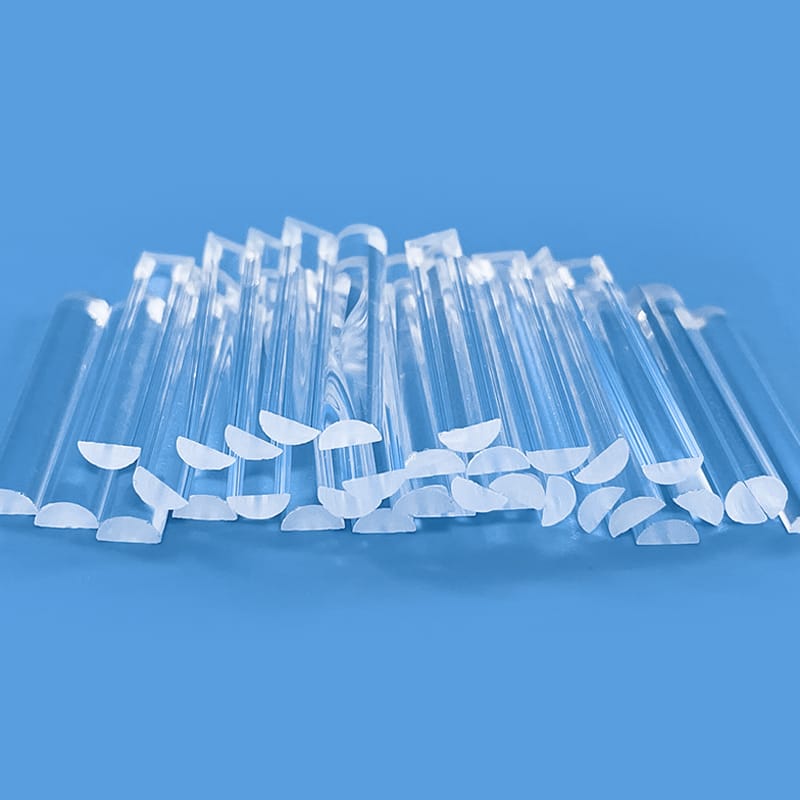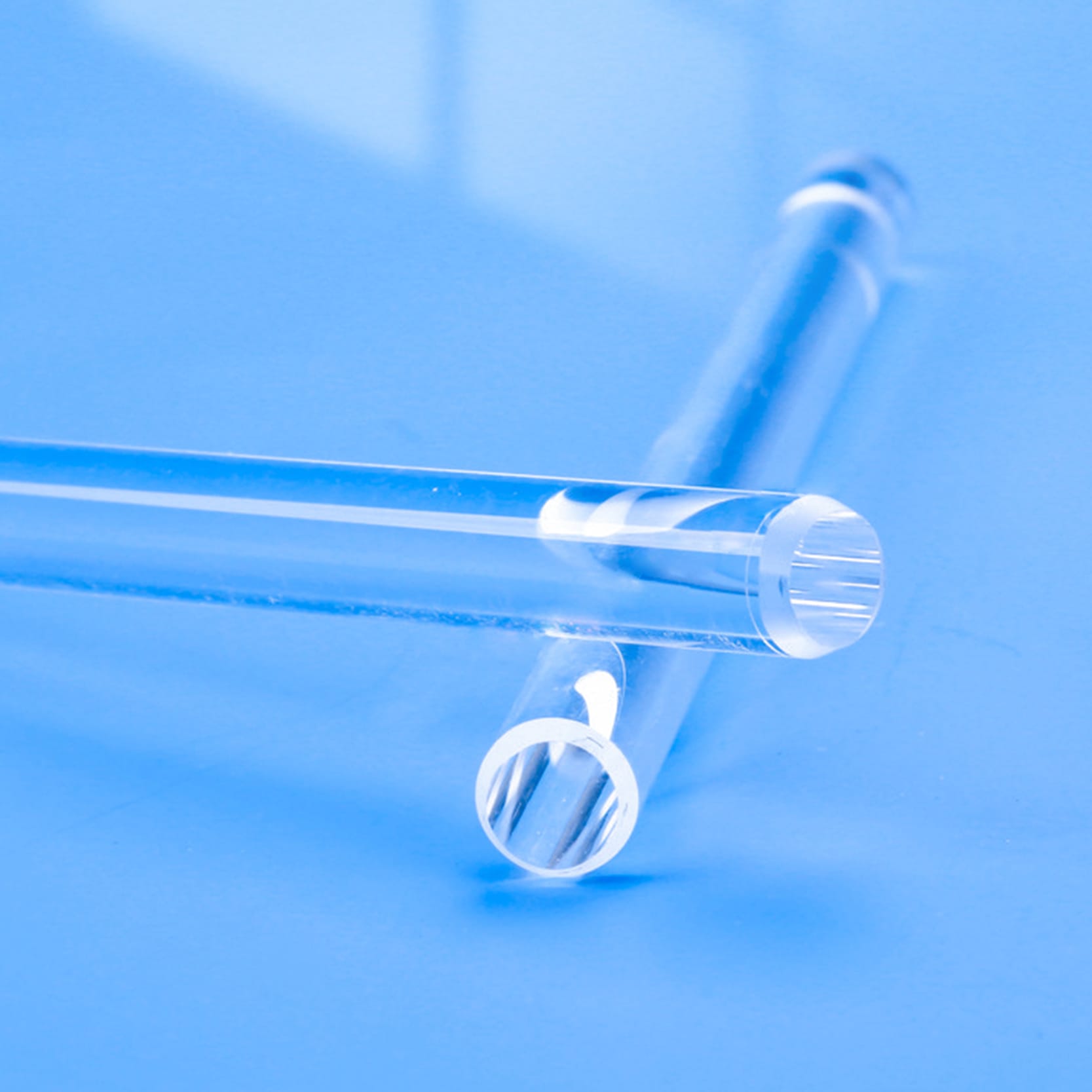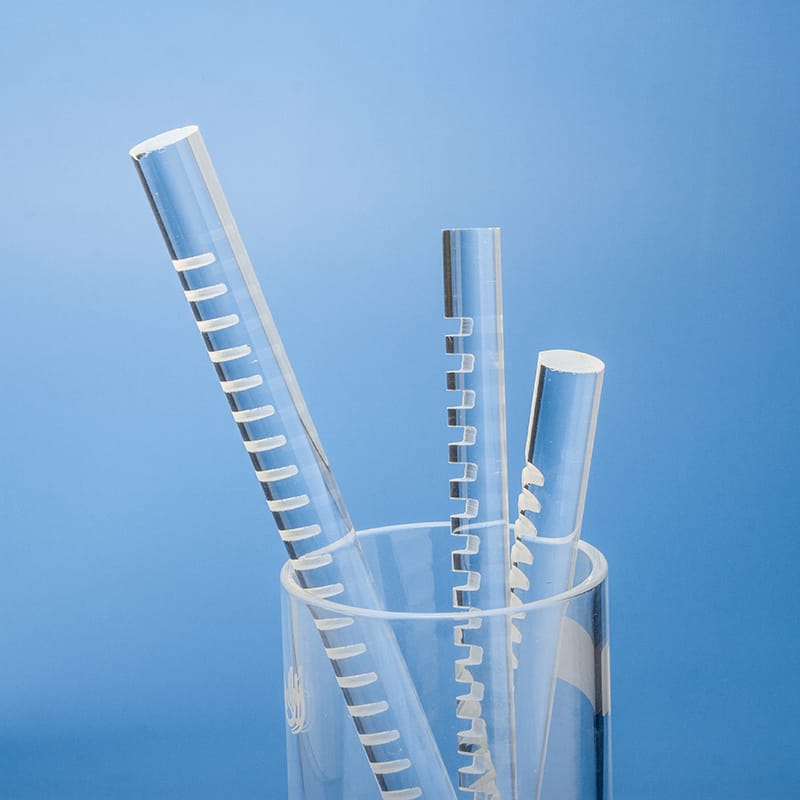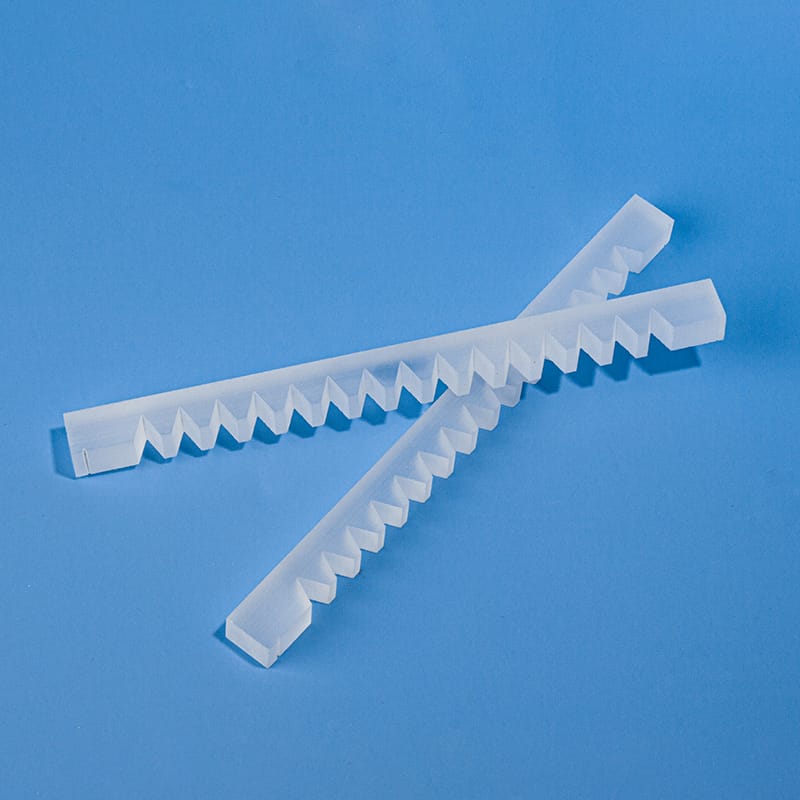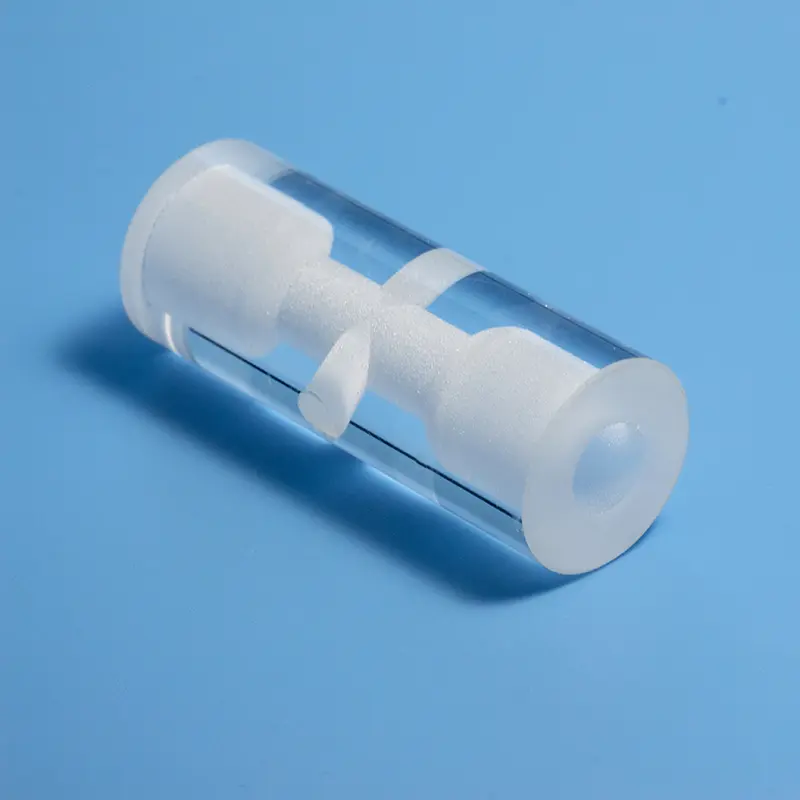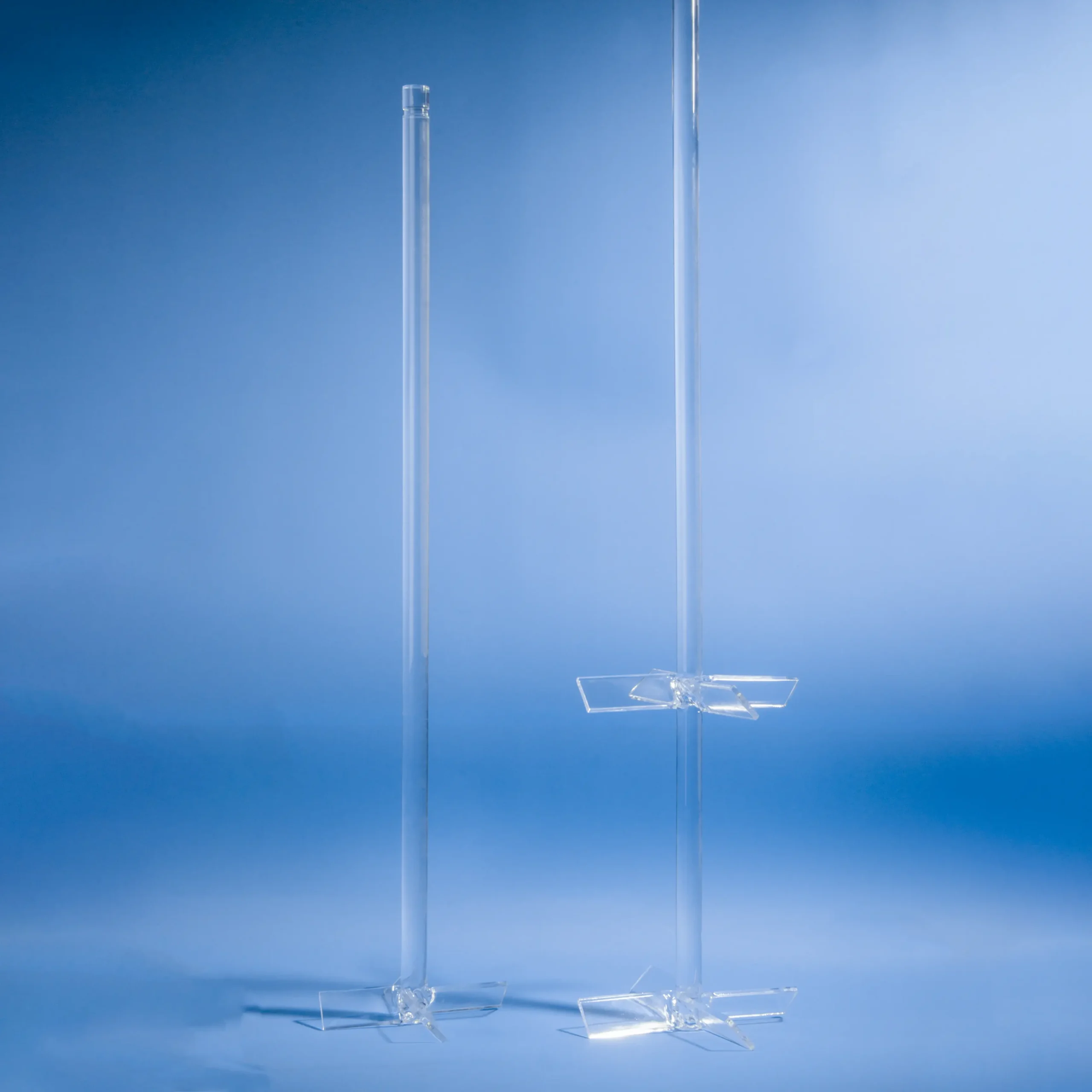Nos tiges en quartz haute pureté et nos agitants en silice fondue sont conçus pour des applications exigeantes nécessitant une résistance chimique supérieure et une stabilité à haute température. Idéaux pour les laboratoires, le traitement chimique et l'industrie des semiconducteurs, ces tiges garantissent un mélange sans contamination de liquides corrosifs et de substances de haute pureté. Des dimensions et des conceptions personnalisées sont disponibles pour répondre à vos besoins spécifiques en matière de mélange.
| Diamètre | Longueur |
|---|---|
| 10mm | 300mm |
| 10mm | 600mm |
| 12mm | 300mm |
| 12mm | 600mm |
| 14mm | 300mm |
| 14mm | 600mm |
| 15mm | 300mm |
| 15mm | 600mm |
| 15mm | 1000mm |
| 16mm | 300mm |
| 16mm | 600mm |
| 16mm | 1000mm |
| 16mm | 1200mm |
| 18mm | 300mm |
| 18mm | 600mm |
| 18mm | 1000mm |
| 18mm | 1200mm |
| 20mm | 300mm |
| 20mm | 600mm |
| 20mm | 1000mm |
| 20mm | 1200mm |
| 22mm | 300mm |
| 22mm | 600mm |
| 22mm | 1000mm |
| 22mm | 1200mm |
| 25mm | 300mm |
| 25mm | 600mm |
| 25mm | 1000mm |
| 25mm | 1200mm |
| 28mm | 300mm |
| 28mm | 600mm |
| 28mm | 1000mm |
| 28mm | 1200mm |
| 30mm | 300mm |
| 30mm | 600mm |
| 30mm | 1000mm |
| 30mm | 1200mm |
| 32mm | 300mm |
| 32mm | 600mm |
| 32mm | 1000mm |
| 32mm | 1200mm |
| 35mm | 300mm |
| 35mm | 600mm |
| 35mm | 1000mm |
| 35mm | 1200mm |
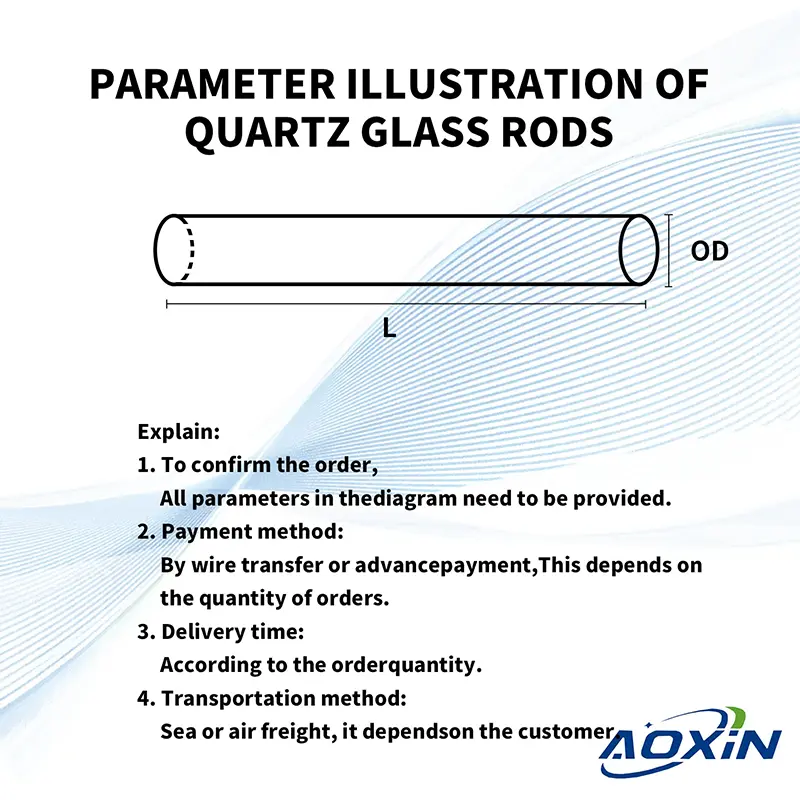
Remarques:
Pour confirmer la commande,
Les paramètres suivants sont requis :
① Diamètre extérieur ② Longueur ③ Quantité
- Méthode de paiement :
Par T/T ou prépaiement
Cela dépend de la quantité de la commande. - Delivery time:
According to the order quantity. - Méthode d'expédition :
Par mer ou par air
Cela dépend du client.
| Contenu des propriétés | Valeurs des propriétés |
|---|---|
| SiO2 | 99.99% |
| Densité | 2,2×10³ kg/cm³ |
| Dureté | Dureté Mohs de 5,5 à 6,5; Dureté Knoop 570 (sous une charge de 100g) |
| Résistance à la traction | 4,8 × 10⁷ Pa (48 N/mm² ou 48 MPa); 7 000 psi |
| Résistance à la compression | >1.1×10⁹ Pa (160,000 psi) |
| Coefficient de dilatation thermique | 5.5×10⁻⁷ cm/cm·°C (20°C-320°C) |
| Conductivité thermique | 1,4 W/m-°C |
| Chaleur spécifique | 670 J/kg-°C |
| Point de ramollissement | 1730°C (3146°F) |
| Point de recuit | 1210°C (2210°F) |
| Point de contrainte | 1120°C (2048°F) |
| Température de travail | 1200°C (2192°F) |
| Résistivité électrique | 7×10⁷ ohm cm (350°C) |
| Taille | Sur mesure |
| Logo | Personnalisation du logo disponible |
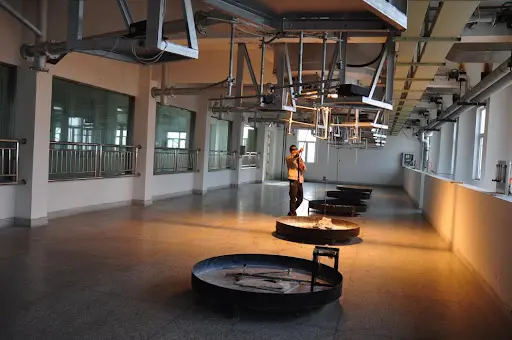
Il existe deux principales méthodes de production de tiges en quartz : la méthode continue et la méthode de fusion à la flamme (également connue sous le nom de méthode de fusion gazeuse).
Méthode continue: Dans cette méthode, le sable de quartz est alimenté par le haut dans un four, qui comprend un creuset en quartz métallique entouré d'éléments de chauffage électrique. Le sable de quartz fond à des températures élevées. Le matériau fondu passe ensuite à travers un orifice de moulage au fond du creuset, produisant des tiges, des tubes, des feuilles ou d'autres formes de produits spécifiées.
Méthode de fusion à la flamme : Cette méthode consiste à utiliser de l'hydrogène et de l'oxygène pour fondre du cristal de quartz incolore. Le matériau fondu est formé en verre de quartz par la fusion et la congélation des particules cristallines dans la flamme. Le verre de quartz est ensuite retiré de la flamme par différentes méthodes et transformé en tiges de quartz de la forme souhaitée.
Haute résistance à la chaleur
Le matériau en quartz présente une excellente résistance à la chaleur, permettant son utilisation dans divers environnements de température, y compris la cuisson à haute température ou les conditions expérimentales.
Dureté et durabilité
La dureté du quartz le rend résistant à l'usure, protégeant efficacement la forme et la texture d'origine des ingrédients tout en prolongeant la durée de vie de la tige de mélange.
Bonne transmission lumineuse
Les tiges de mélange en quartz ont généralement une bonne transmission de la lumière, ce qui facilite l'observation des changements d'ingrédients pendant le processus de mélange.
Conceptions diverses
La structure d'une tige de mélange en quartz comprend généralement le corps de la tige, la tête et la tige de connexion. Les têtes sont conçues sous différentes formes, telles que des disques ou des cônes, pour répondre à divers besoins de mélange. Les tiges de connexion sont généralement équipées de boutons de réglage pour un ajustement facile de la longueur de la tige de mélange.
Scénario d'application
Expériences chimiques
Dans les expériences chimiques, les barres d'agitation en quartz sont couramment utilisées pour remuer des solutions et mélanger des réactifs afin d'assurer uniformité et précision tout au long du processus expérimental. Leur résistance à haute température et leur résistance à la corrosion les rendent particulièrement adaptées aux expériences nécessitant des températures élevées ou des réactifs fortement corrosifs.
Expériences biologiques
Dans les expériences biologiques, les tiges d'agitation en quartz peuvent être utilisées dans la culture cellulaire, les réactions enzymatiques et d'autres processus pour fournir un environnement de mélange stable. Leurs propriétés non toxiques et non contaminantes garantissent l'exactitude et la fiabilité des résultats expérimentaux.
Secteur pharmaceutique
Dans le domaine pharmaceutique, les tiges agitateurs en quartz sont utilisées dans les processus de synthèse et de préparation des médicaments pour garantir la pureté et la qualité des médicaments. Leur haute pureté et leur résistance à la corrosion en font des outils indispensables dans l'industrie pharmaceutique.
Les tiges de mélange en quartz offrent plusieurs avantages par rapport aux tiges de mélange en plastique, notamment une résistance élevée à la température, une plus grande stabilité chimique, une résistance structurelle supérieure, un risque réduit de rupture et une durée de vie plus longue.
Les baguettes de mélange en quartz sont adaptées aux environnements expérimentaux suivants :
Environnements à haute température : Les tiges de mélange en quartz peuvent être utilisées pendant de longues périodes à des températures allant jusqu'à 1100 °C, et à court terme à des températures allant jusqu'à 1730 °C, ce qui les rend idéales pour des expériences de chauffage à haute température.
Environnements chimiquement exigeants: Les tiges d'agitation en quartz présentent une excellente stabilité chimique, avec presque aucune réactivité avec les acides ou les bases, à l'exception de l'acide fluorhydrique et de l'acide phosphorique chaud. Cela les rend adaptées à une utilisation dans des applications de chauffage corrosif.
Les tiges en verre de quartz montrent une excellente stabilité lors d'expérimentations à haute température et ne se déforment pas facilement. Le verre de quartz a un faible coefficient d'expansion thermique, ce qui lui permet de résister aux changements rapides de température sans se briser. Même lorsque le verre de quartz est chauffé à environ 1100°C puis plongé dans de l'eau à température ambiante, il ne se fissure pas. De plus, les tiges en verre de quartz possèdent une forte résistance à la chaleur, avec une température d'utilisation à court terme allant jusqu'à 1300°C et une température d'utilisation à long terme de 1100°C.
Questions fréquemment posées
Nous sommes spécialisés dans la fabrication intégrée de composants en verre de quartz de haute pureté. Nos principales gammes de produits comprennent :
Tubes et barres de quartz: Une large gamme de diamètres et de spécifications.
Plaques et disques de quartz: Découpés et polis avec précision pour usages optiques et industriels.
Verrerie de laboratoire en quartz: Une gamme complète de verrerie standard et sur mesure, incluant béchers, fioles et nacelles.
Quartz de qualité semi-conducteur: Composants de haute pureté tels que les tubes de traitement et les porteurs pour la fabrication de semi-conducteurs.
Composants fabriqués sur mesure: Nous pouvons produire des pièces complexes adaptées à vos conceptions et spécifications uniques.
Oui. La fabrication sur mesure est au cœur de notre activité. Forts de plus d'une décennie d'expérience spécialisée, nous nous associons à des entreprises pour leur offrir des services OEM/ODM experts. Nos capacités incluent le soudage, la rectification, le perçage, le polissage, le pliage et d'autres techniques d'usinage de précision, afin de créer des composants qui répondent précisément à vos exigences.
La qualité est primordiale dans notre processus de fabrication. Nous sommes un fabricant certifié ISO 9001:2015, garantissant que nos processus répondent aux normes internationales de gestion de la qualité.Nos produits subissent également des tests SGS rigoureux pour leur pureté et leurs performances. Nous utilisons des matières premières de haute pureté (jusqu'à 99,998% de SiO2) pour produire des articles en quartz fondu et en silice fondue dotés d'une stabilité thermique exceptionnelle, d'une résistance aux températures élevées et d'une inertie chimique.
Nous avons rationalisé notre processus pour qu'il soit le plus efficace possible :
Soumettez votre demande de devis (RFQ) : Envoyez-nous vos dessins techniques, spécifications et exigences via notre formulaire de contact sur le site web ou par e-mail.
Réponse rapide : Vous pouvez vous attendre à une première réponse en quelques minutes et à une communication détaillée dans la demi-heure.
Conception & Proposition : Nous vous soumettrons une proposition de conception détaillée et un devis compétitif sous 24 heures.
Prototypage & Production : Dès approbation, nous passons rapidement du prototypage à la production à grande échelle afin de respecter vos délais.
Un partenariat avec Aoxin Quartz offre plusieurs avantages clés :
Expertise avérée : Avec plus de 10 ans d'expérience dans l'industrie, nous possédons les connaissances techniques nécessaires pour relever les défis complexes.
One-Stop Solution: We manage the entire production process, from sourcing high-purity raw materials to fabricating and finishing complex components.
Valeur compétitive : Situés dans un pôle majeur de production de quartz, nous tirons parti d'une chaîne d'approvisionnement efficace et d'une fabrication avancée pour offrir une qualité exceptionnelle à un prix compétitif.</span
Dedicated Partnership: Over 90% of our clients become long-term partners. We are committed to your success through responsive service, reliable quality, and innovative solutions.





